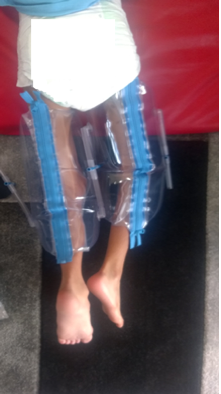Use of Splints in Spasticity Management
Children with Neurological Conditions such as Cerebral Palsy or Brain Injury, often have difficulty moving their body. Muscle Spasticity (being the most common reason). is one of the most common reasons for this difficulty.
Spasticity is presented when a muscle is stretched and (the response is an abrupt contraction) it responds by contracting abruptly (that is, the muscle (quickly) moves quickly in the opposite direction of stretch).
When a spastic child tries to move or being moved; the motion will be limited which often results in a Clonus. In long term, this limited movement can cause individual’s muscle’s to grow at a slower rate compared to the associated bones connected to responsible muscle’s. This can, in turn, lead to muscle contraction and reduced range of movements.
There are interventions such as Physiotherapy, appropriate medication and occasionally surgery to overcome difficulties caused due to Spasticity. In addition to the above mentioned interventions; casts, splints, and orthoses are often recommended.
At RehabBasics, along with customized Physiotherapy program and treatment plan, we use a wide range of splints to enhance the quality of our client’s life and everyday activities. Rehab Basics will also refer client’s to appropriate interventions if needed or recommend other therapies if required.
For more information or advice about Splints and Spasticity management please contact Rehab Basics on 01604 718091and a member of our team will be happy to help you OR
you can visit our website www.rehabbasics.co.uk

